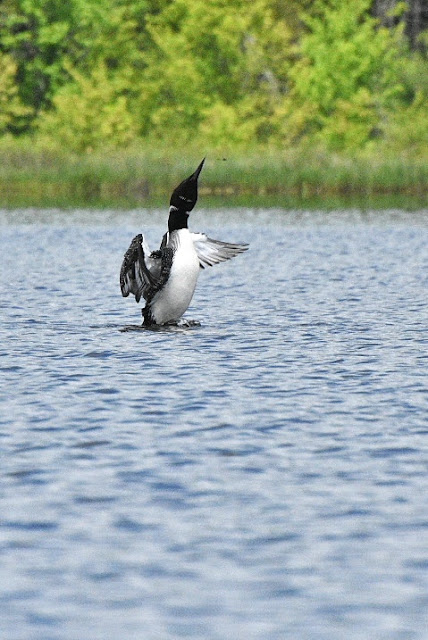Caught?
It's really hard to keep a camera with a nine-times magnification zoom lens locked on a subject that's already far away when you're sitting in a kayak.
For years, I had been told to adjust my D-SLRs so that they used a button on the back of the body to focus. Many of my fellow members of my photography club had done it and I had seen this recommendation on some of the photography YouTube channels that I watch.
Last year, after trying my luck at wildlife photography, I decided to make the switch to back-button focusing. The benefit of selecting one of the rear buttons to focus was that you weren't tying your focusing to the shutter release. On most D-SLR and mirrorless cameras, the default setting is to have the focus associated with the shutter-release button.
You would look through your viewfinder and half-press the shutter release, which would focus on whatever your sensor is set up to focus on. While continuing to hold the button halfway, you could recompose your viewfinder to get the composition that you want. You would then simply have to press further down on the button to take the shot.
The problem with that setup is that if you lift your finger from the shutter release while recomposing the shot, the focus lock is broken. If you try to take that picture, the camera will refocus on whatever the sensor is now pointed to, and you could miss your shot.
The back-focus button will let you lock on your subject, and once you release that button, the focus won't change until you press that button again. The shutter release button won't affect that focus.
So, bobbing on the water in a kayak, I only have to focus once on the subject, though that can be tricky when you're zooming in and want only a single focal point.
I didn't want to get too close to the loon after spotting it. Like so many loons I've encountered while kayaking, there's a risk that the bird will dive under the water, coming up further away.
This loon didn't seem too bothered but I didn't want to risk getting any closer. I pulled out my camera from the dry bag and set up my shot, pressing the rear button. And then all I had to do was wait for what I hoped would be the right moment.
I had seen the loon flap its wings and stretch upward a couple of times, as I approached, without my camera, and I was hoping that he'd do it one more time.
I was in luck. As he began to spread his wings, I pressed my shutter release.
My camera was set on continuous shooting and in a couple of seconds, I had about 10 shots. And then, the loon dove under the water surface.
Looking at my shots, at home, I saw that the loon had extended his neck as far as it could and seemed to turn its head a bit. Because my 70-300mm lens is only a medium quality (I put it on my crop-sensor body, which effectively makes it a 450mm maximum zoom), I can't get enough crispness.
I'd love to get the full-frame, 800mm fixed-focus, f/6.3 lens, but until I find a benefactor, I'll have to do with what I've got.
But the photo, even though it's seriously cropped, seems to show a dragonfly fluttering above the loon. Was the loon looking to get a morning snack?
Do you see it? Click on the photo to magnify it on your screen. It's just to the right of the tip of the loon's beak.
Again, it's not the sharpest photo but I think it's cool.
Thanks to my back-button focusing, I don't think I would have caught this shot. I wonder if the loon caught the dragonfly.
Happy Friday!




Comments
Post a Comment